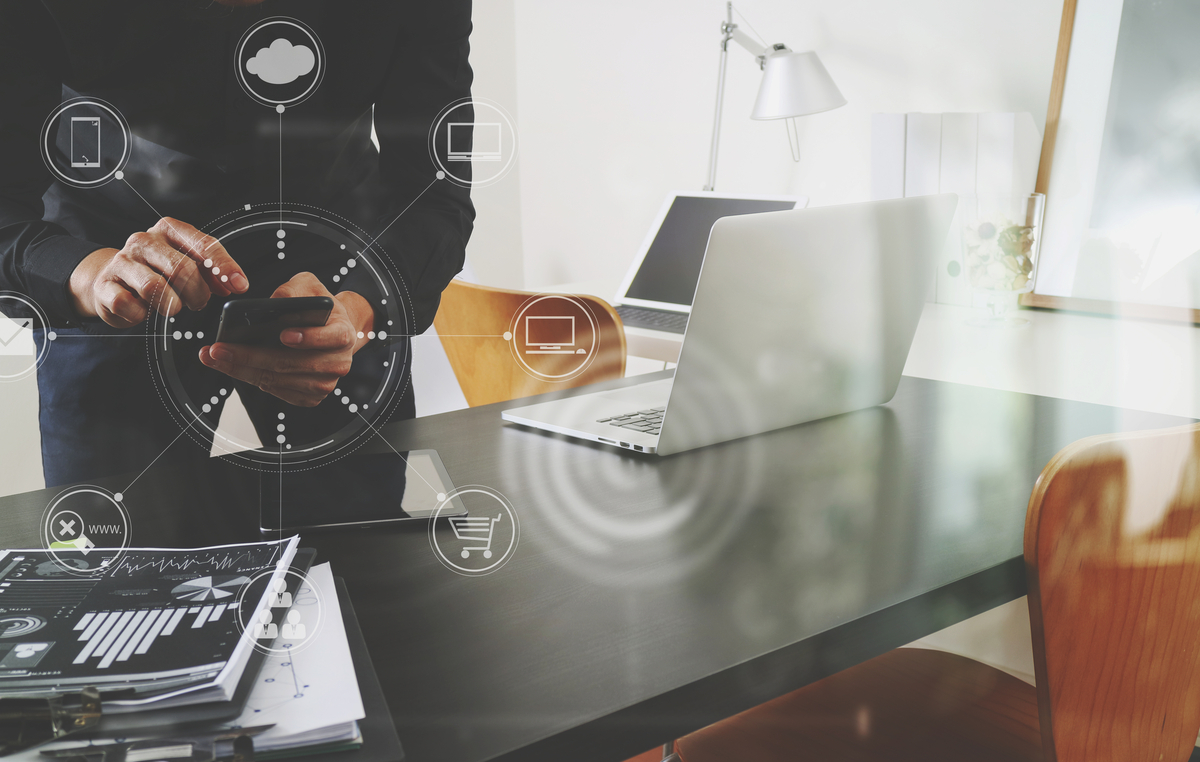
What is a smart office?
Smart offices are exactly what they sound like – workplaces that use technology to help elevate employees’ productivity. As the demands for technology and data become more prevalent across all industries, a growing number of companies are updating their offices accordingly.
Owl Labs, a company that makes video conferencing devices, published an informative explanation on their website detailing why smart offices can be so beneficial. According to Owl Labs, “Smart offices combine a variety of different tools and technologies to support more productive and automated work. Smart office tools can include video conferencing software and hardware tools, meeting room and desk reservation software, and office analytics tools to provide insight into how different office spaces are being used.”
If you’re looking for ways to optimize workplace experience while protecting your people amidst COVID-19, check out our COVID-19 Resource Hub or watch our free webinar series.
Types of smart office technology
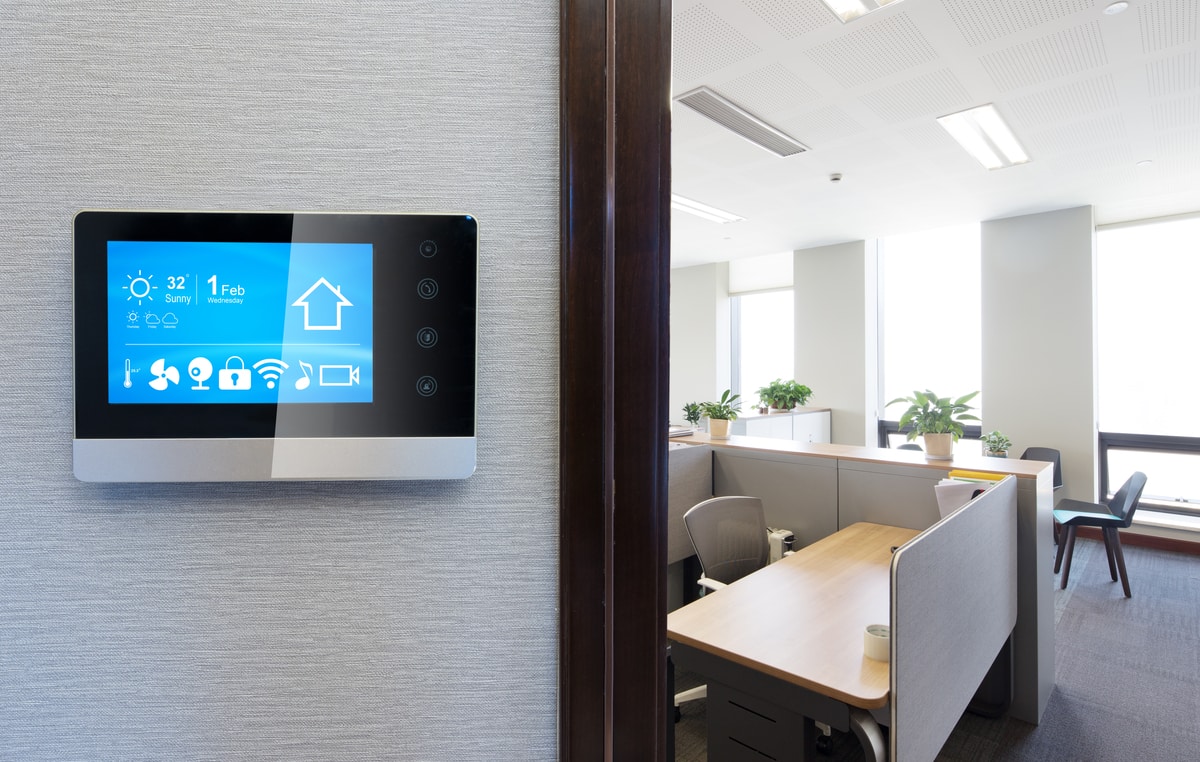
When you think of what a smart office entails, it’s easy for your mind to wander and imagine the so-called “office of the future” featuring robots and AI. With that said, there are many elements and components of existing technology, which you likely are familiar with, that can be incorporated immediately to turn an office into a smart office. Common features of smart technology include high tech cameras, digital displays, desk and room booking software, and sensors for temperature and lights.
Digging a little deeper into the desk booking element of smart technology, since that’s our specialist subject – Smartway2’s desk booking software enables your company to attain peak performance by enabling employees to book everything they need for a productive day’s work in advance – including conference rooms, desks, AV equipment, parking spots and even meals. Our technology provides numerous employee experience benefits, including:
- Optimize space utilization
- Increase collaboration
- Automate repetitive resource scheduling tasks
- Provide a slick visitor experience
- Reduce your carbon footprint
Smart office benefits

Adding smart technology can unlock numerous ways to make your workplace more efficient and effective. Ovio Smart World, a smart technology company, put together a list highlighting 4 major benefits of implementing smart technology in your office:
- Convenience. If the staff have access to control over the temperature and humidity directly by their phone, they can customize their workplace experience for optimum comfort.
- Improve staff efficiency. Many repetitive, time consuming, menial tasks can be automated, allowing people to focus on higher value work. Consequently, professional goals will be achieved faster and more accurately.
- Cut down energy usage. Smart temperature and lightening in the workplace can help automatically switch off when not in use, reducing carbon footprint and costs.
- Increase security. Some security devices such as security cameras and Wi-Fi connected sensors are very helpful for workplace security.
How can smart offices help during/after the COVID-19 pandemic?

Igor, a connectivity enabled platform, addressed the question as to how and why smart offices can help in a post COVID-19 world. According to a Igor, “IoT-enabled workplace safety measures like UV disinfection and desk scheduling can work in tandem with traditional health and safety precautions like sneeze guards, face masks and hand washing. These additional measures increase employee peace of mind and create a safer, healthy workplace environment. When you pair these benefits with the knowledge that agile office spaces also improve efficiency and reduce the cost of day-to-day operations, it’s clear that IoT technology in the workplace is a worthwhile, long-term investment.”
In the spirit of returning to the office amid the pandemic, Smartway2’s software is specially formulated to help your company in the following 8 ways:
- Enable social distancing:
– Fully automate physical distancing in your workplace.
– Users can only book desks that are COVID-safe.
– When someone makes a booking, Smartway2 automatically takes all desks around them out of service.
– Works with CAD floor plans or just a simple image of your office layout. - Cleaning and sanitation for rooms & desks:
– Prevent touch contamination by ensuring meeting rooms and desks are cleaned after every use.
– Easily prevent people from booking desks that have been used in the past 48 hours.
– Each desk has a countdown timer, so you can see at-a-glance how long it’ll be before a desk becomes available again. - Digital signage on desks:
– Using Smartway2’s desk display panels, you can clearly indicate which desks are out of service or awaiting cleaning, so nobody will sit at a workstation until a cleaner has put it back in service after sanitation. - Use meeting rooms as ‘overspill’ spaces:
– Open up available meeting rooms to provide employees with additional desk space.
– Allocate meeting rooms as ‘overspill’ spaces in your office, e.g. if the cafeteria is full, automatically open up a conference room so people can safely sit down and eat their lunch.
– Configure rules for each individual meeting room and allow users to see at a glance which spaces are available to book. - Contact tracing:
– If one of your colleagues falls ill, run reports on whom they may have come into contact with.
– Identify risk levels and the reasons why – e.g. perhaps they sat in close proximity to someone who has fallen ill, attended the same meeting, or worked in the same office neighborhood. - Self-certification:
– Reduce presenteeism (according to an APA study, presenteeism costs the US economy $226 billion per year).
– Reduce health risks.
– Improve compliance. - Manage demand:
– Enable managers to gauge the level of necessity for each team member to be physically present at work.
– Reduce health risks and increase productivity.
– Gain valuable insights that enable you to better support employees. - Employee surveys:
– Predict demand, e.g. by asking how many days per week people would like to work from the office.
– Conduct frequent temperature checks to understand sentiment and perceptions of workplace safety.
– Adopt an agile approach to change management, learning and adjusting along the way.
Office of the Future: incorporating new technology
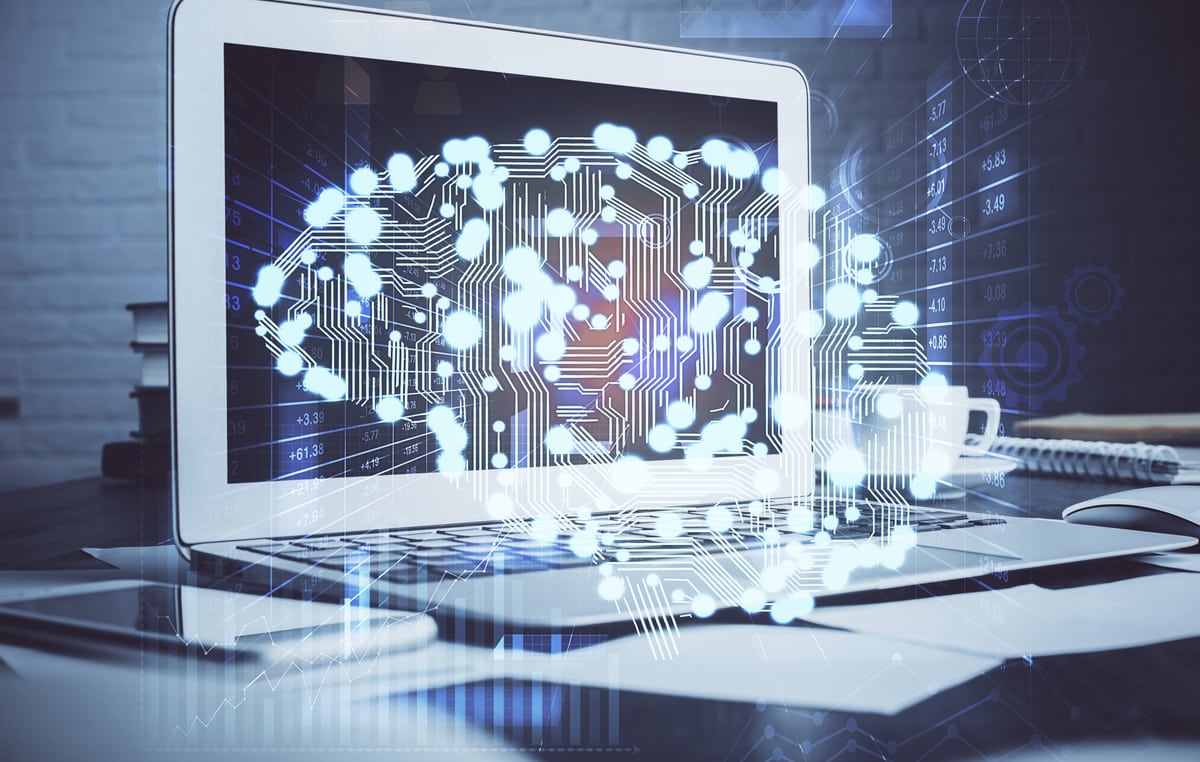
While we referenced the concept of the “office of the future” at the beginning of this blog post, we wanted to take some time and elaborate a bit more as the “office of the future” takes into account many different technological advances.
For greater detail on the subject, we recently wrote a whole blog post on what an “office of the future” could potentially look like. But, for now, we are sharing an infographic from the Intelligence analytics platform that shows some specific technologies that might become more prevalent in offices as people adapt to the “new normal.” Each of these technologies could be considered a component of a smart office:
- Pre-entry wellness checks
- Touchless entry
- Social distance sensors
- Remote collaboration tools
- Cyber security and at home network security
- Employee wellness, communication and engagement tools
- Low touch and voice enabled tech
- Autonomous cleaning solutions
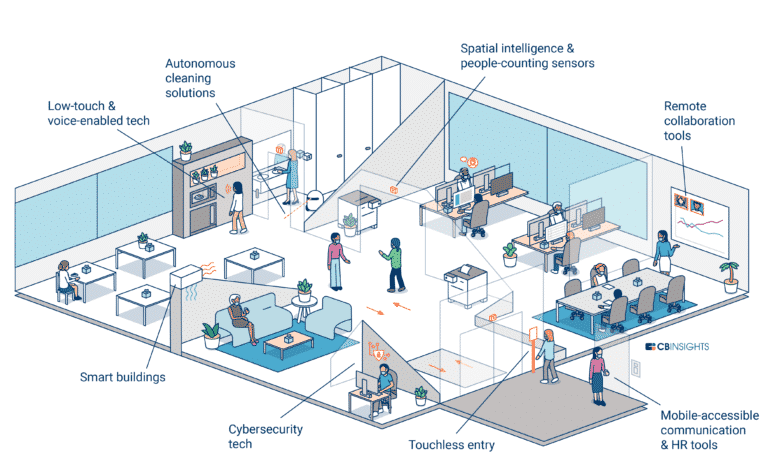
Smart Office Market Expanding
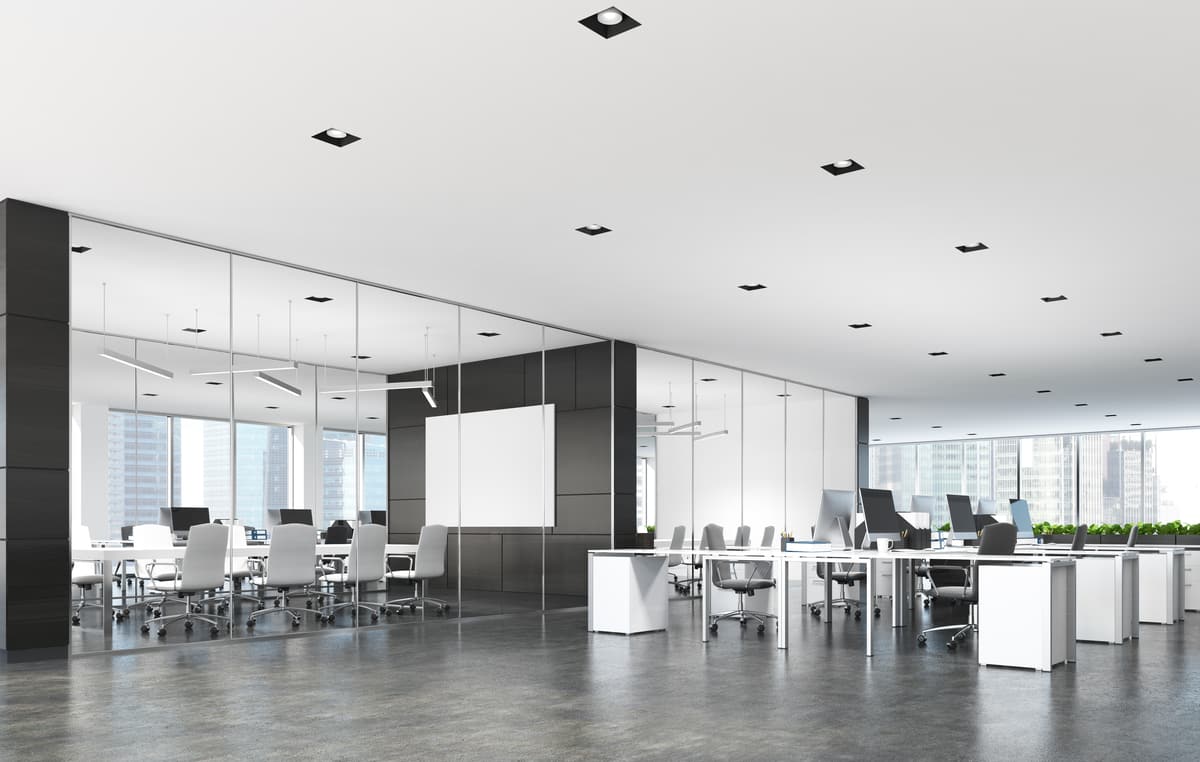
As industries and companies begin to implement smart office features, the smart office market is expected to increase in the coming years. Million Insights a distributor of market research reports, just released data that shows, “The global smart office market is anticipated to reach USD 57.05 Billion by 2025. It is also expected to register 13.2% CAGR during the forecasted period, 2017 to 2025.” A PR Newswire article covering this data included the following key findings from Million Insights report:
- The service segment is expected to witness 15.0% CAGR during the forecasted years, 2017 to 2025.
- The retrofit office type segment is projected to register the highest CAGR during the forecasted years, 2017 to 2025.
- North America held the largest share across the global smart office market in 2016.
- The key players in this market are ABB Ltd.; Schneider Electric; Cisco Systems, Inc.; Honeywell International, Inc.; Johnson Controls; and Siemens AG.
Smartway2 is a workplace experience platform for modern, agile and collaborative companies. Our flexible software can enable you to increase productivity, optimize your space and reduce your carbon footprint by enabling employees to book facilities, spaces, desks and more in advance.


